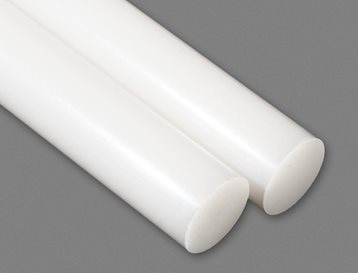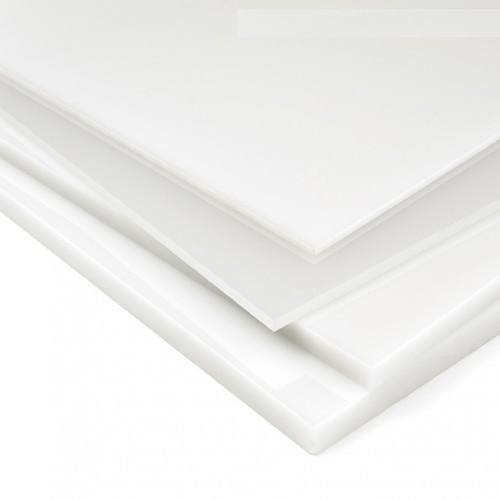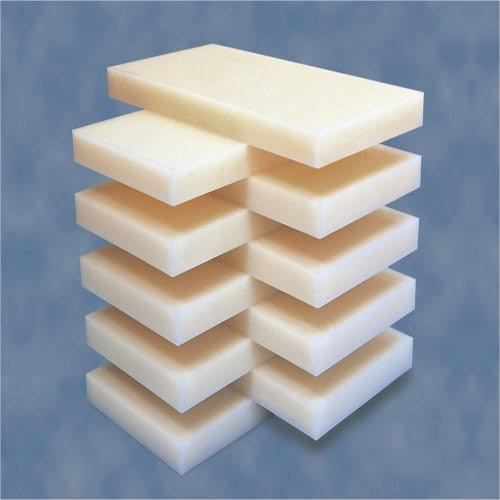Polypropylene (PP) is a thermoplastic “addition polymer” made from the combination of propylene monomers. It is used in a variety of applications to include packaging for consumer products, plastic parts for various industries including the automotive industry, special devices like living hinges, and textiles. Polypropylene has a relatively slippery surface which can make it a possible substitute for plastics like Acetal (POM) in low friction applications like gears or for use as a contact point for furniture. Perhaps a negative aspect of this quality is that it can be difficult to bond Polypropylene to other surfaces (i.e. it does not adhere well to certain glues that work fine with other plastics and sometimes has to be welded in the event that forming a joint is required). Although polypropylene is slippery at the molecular level, it does have a relatively high coefficient of friction – which is why acetal, nylon, or PTFE would be used instead. Polypropylene also has a low density relative to other common plastics which translates to weight savings for manufacturers and distributors of injection molded Polypropylene parts. It has exceptional resistance at room temperature to organic solvents like fats but is subject to oxidation at higher temperatures (a potential issue during injection molding).
Polypropylene (PP) can be used:
- Pipe Sheet Extrusion
- Medical
- Blow Moulding
- Blown Films
- Advanced Food Packaging
- Advanced Technical Packaging
- Caps & Closures
- Masterbatches/Compounding
- Cast and BOPP Films
- Injection Moulding
- Textiles


